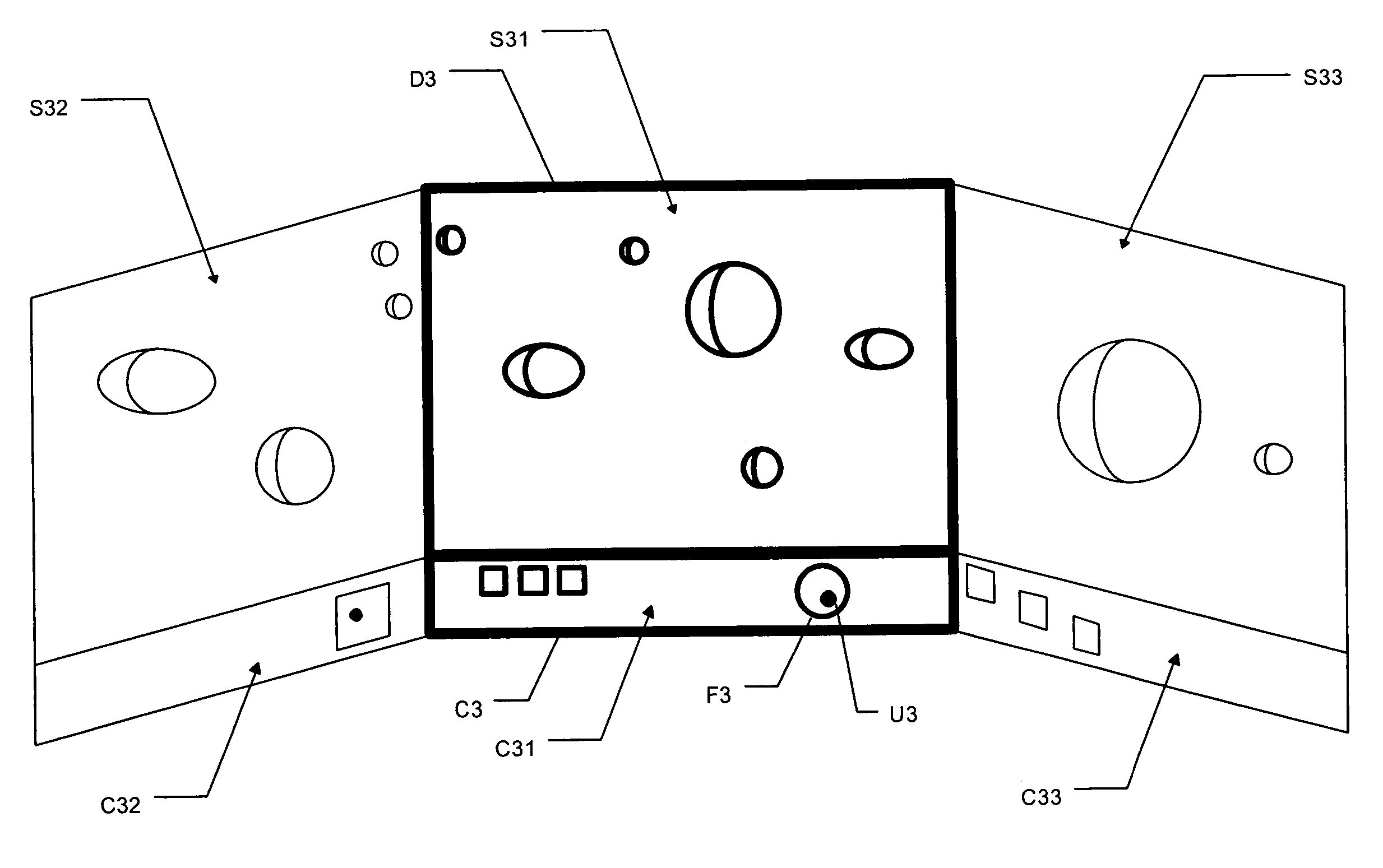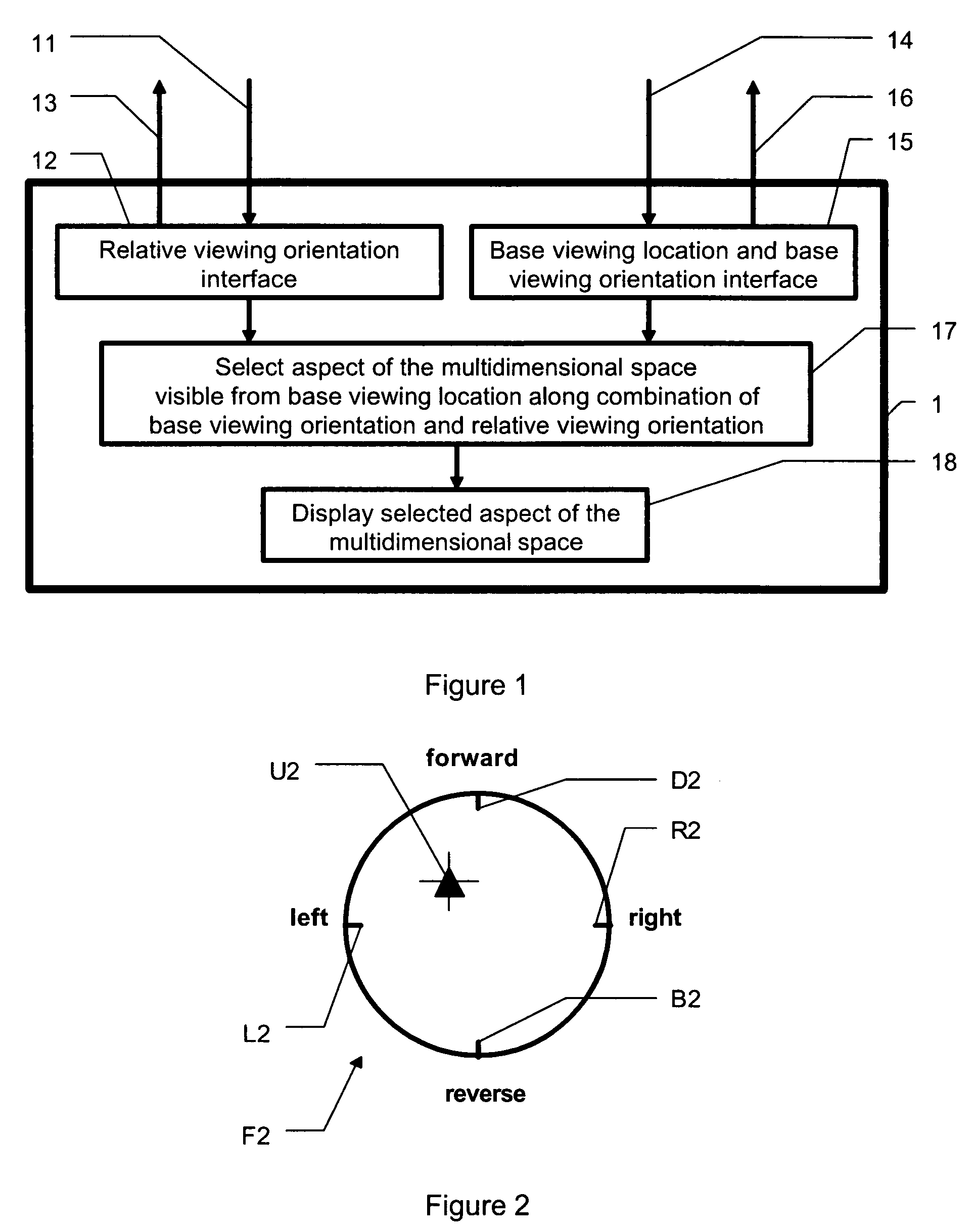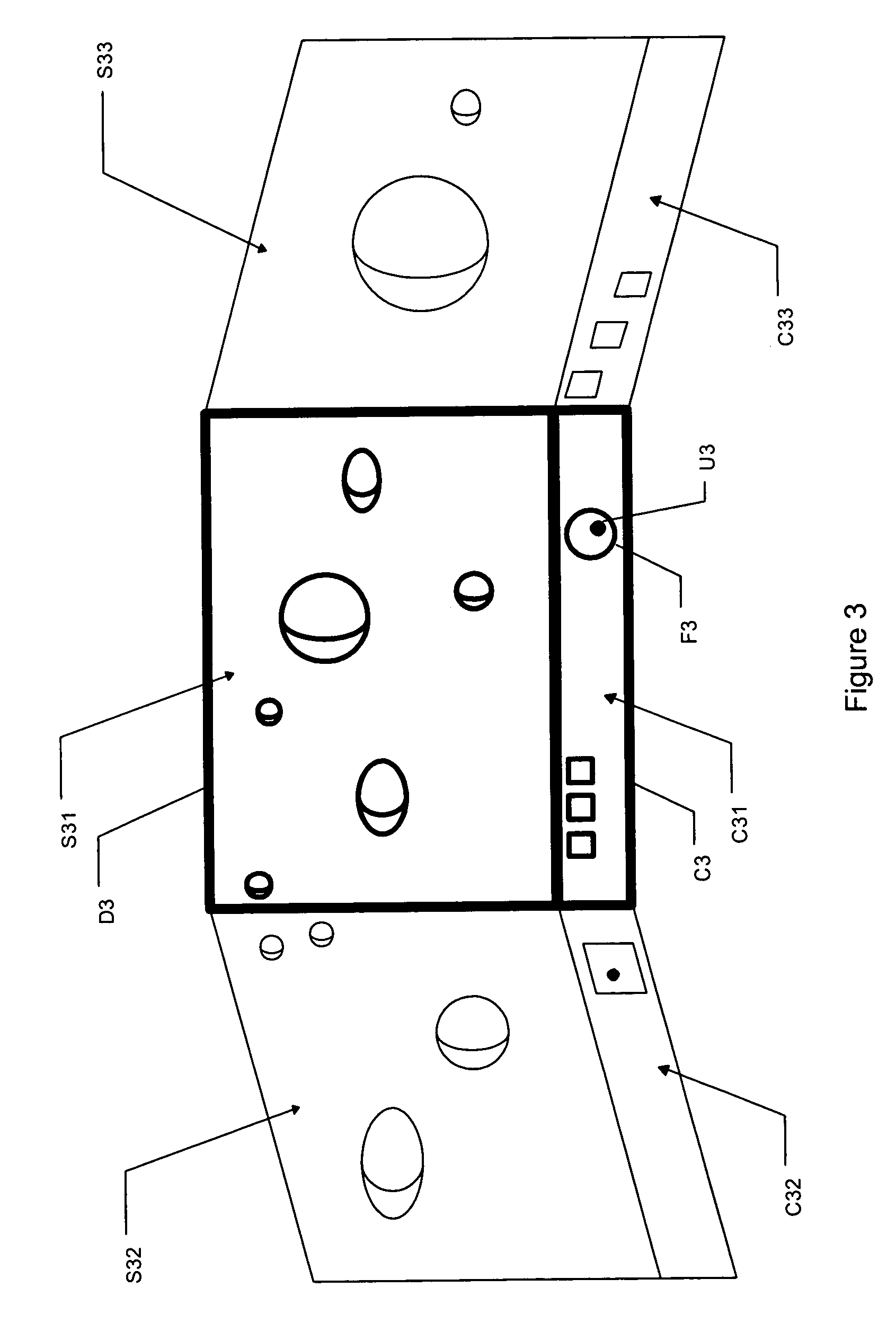Navigation and viewing in a multidimensional space
a multi-dimensional space and navigation technology, applied in the direction of mechanical pattern conversion, static indicating devices, instruments, etc., can solve the problems of inability to intuitively use, inherently two-dimensional navigation, and still problematic in higher dimensions
- Summary
- Abstract
- Description
- Claims
- Application Information
AI Technical Summary
Benefits of technology
Problems solved by technology
Method used
Image
Examples
Embodiment Construction
[0025] The present invention provides a display controller adapted for use with multidimensional information, especially for use in virtual reality or other computer displays. FIG. 1 illustrates the information flow in an example display controller 1 according to the present invention. A user can provide input 14 to indicate a base viewing location and base viewing orientation. Base viewing location and base viewing orientation interface 15 transforms the user input 14 to establish a base viewing location and base viewing orientation, and can provide feedback 16 associated with the base viewing location and base viewing orientation to the user. The user can also provide input 11 to indicate a relative viewing orientation. Relative viewing orientation interface 12 transforms the user input 11 to establish a relative viewing orientation, and can provide feedback 13 associated with the relative viewing orientation to the user. The display controller 1 combines the base viewing orientat...
PUM
 Login to View More
Login to View More Abstract
Description
Claims
Application Information
 Login to View More
Login to View More - R&D
- Intellectual Property
- Life Sciences
- Materials
- Tech Scout
- Unparalleled Data Quality
- Higher Quality Content
- 60% Fewer Hallucinations
Browse by: Latest US Patents, China's latest patents, Technical Efficacy Thesaurus, Application Domain, Technology Topic, Popular Technical Reports.
© 2025 PatSnap. All rights reserved.Legal|Privacy policy|Modern Slavery Act Transparency Statement|Sitemap|About US| Contact US: help@patsnap.com



